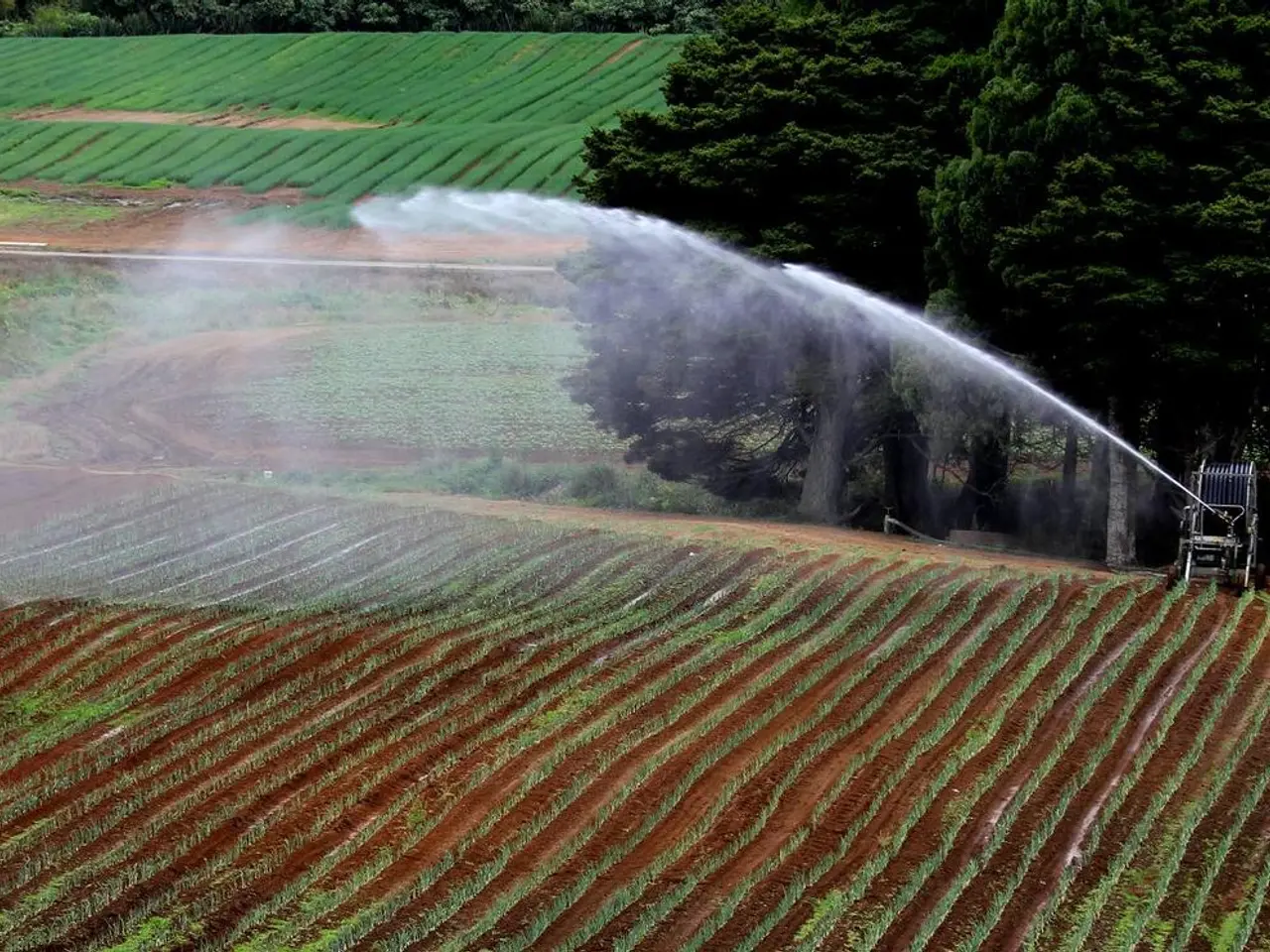Green hydrogen receives approval - GEGHA demonstrates that green hydrogen is not just theoretical, but feasible in practice
The Good Earth Green Hydrogen and Ammonia (GEGHA) project, a joint venture between Sundown Pastoral Company and Hiringa Energy Limited, is set to revolutionise sustainable agriculture in regional New South Wales (NSW). The project, located on Sundown Pastoral Company land just off the Gwydir Highway, 33km south-west of Moree, will utilise renewable energy to generate hydrogen via electrolysis and produce ammonia fertiliser with negligible CO2 emissions [1][2].
Key features of the GEGHA project include:
- Production Capacity: The facility is expected to produce up to 4,500 tonnes of low-carbon ammonia annually and approximately 224 tonnes of green hydrogen per year [2].
- Environmental Impact: The project is anticipated to cut up to 17,000 tonnes of CO₂-equivalent emissions annually, which is comparable to removing 6,500 cars from the road or planting 500,000 trees [1][2].
- Usage: The green ammonia fertiliser will replace conventional fossil fuel-based fertilisers used heavily in agriculture, helping farms to reduce their carbon footprint. The green hydrogen produced will power irrigation pumps, heavy vehicles, and local transport traditionally reliant on diesel, further reducing emissions across the agricultural supply chain [1][2].
- Economic and Strategic Benefits: By producing fertiliser domestically, GEGHA enhances price stability and supply security for regional farmers, reducing reliance on imported, high-emission fertilisers with volatile overseas market pricing [1][2].
- Scalability and Model: The project serves as a scalable, demand-driven model. Success at GEGHA is intended to serve as a blueprint for decentralized green hydrogen and fertiliser production across NSW's agricultural areas, driving regional economic resilience and sustainable industry growth [1][4].
Financial Close on the GEGHA project was reached in mid-2025, with construction scheduled to begin in October 2025. The project is funded by the NSW Government in association with Hiringa Energy and Sundown Pastoral Company under the Net Zero Plan Stage 1: 2020-2030 [1].
Hiringa Energy is currently progressing plans for expansion projects in both NSW's Riverina and Gwydr regions. Each plant will include over 50 MW of electrolysis to produce approximately 20,000 tonnes of ammonia annually [3]. Green hydrogen produced by the GEGHA facility will be used in Hiringa's heavy-vehicle refuelling network and on-farm to displace diesel in irrigation pumping.
Project financing was provided by National Australia Bank (NAB). NAB Executive for Regional and Agribusiness Khan Horne stated that the project could help transform Australian agriculture by enabling a more resilient, low-emissions future [2].
In summary, the GEGHA project is a pioneering initiative aiming to power and fertilise agriculture with green hydrogen and ammonia, reducing emissions significantly while improving supply chain resilience and regional sustainability [1][2][4]. The project's success could pave the way for a more sustainable future in Australian agriculture.
References:
[1] Hiringa Energy. (2022). GEGHA Project. Retrieved from https://hiringaenergy.com/projects/gegha/
[2] Australian Renewable Energy Agency. (2022). Good Earth Green Hydrogen and Ammonia (GEGHA) project. Retrieved from https://arena.gov.au/projects/good-earth-green-hydrogen-and-ammonia-gegha-project/
[3] Hiringa Energy. (2023). Expansion Projects. Retrieved from https://hiringaenergy.com/expansion-projects/
[4] New South Wales Government. (2022). Net Zero Plan Stage 1: 2020-2030. Retrieved from https://www.nsw.gov.au/improving-nsw/environment/net-zero-plan/net-zero-plan-stage-1-2020-2030
- The GEGHA project, a joint venture between Sundown Pastoral Company and Hiringa Energy Limited, plans to generate hydrogen via electrolysis to produce ammonia fertiliser, aiming to revolutionise sustainable agriculture in regional New South Wales.
- The facility is expected to produce up to 4,500 tonnes of low-carbon ammonia annually, which could lead to a reduction of up to 17,000 tonnes of CO₂-equivalent emissions, comparable to removing 6,500 cars from the road or planting 500,000 trees.
- Green ammonia fertiliser produced by the GEGHA project will replace conventional fossil fuel-based fertilisers, helping farms reduce their carbon footprint, while the green hydrogen will power irrigation pumps, heavy vehicles, and local transport, further reducing emissions.
- Financial Close on the GEGHA project was reached in mid-2025, with construction scheduled to begin in October 2025, funded by the NSW Government, Hiringa Energy, and Sundown Pastoral Company under the Net Zero Plan Stage 1: 2020-2030.
- Hiringa Energy is currently progressing plans for expansion projects in both NSW's Riverina and Gwydr regions, with each plant slated to produce approximately 20,000 tonnes of ammonia annually and use green hydrogen to displace diesel in various applications.
- The successful implementation of the GEGHA project and potential expansion could pave the way for a more sustainable future in Australian agriculture, driving economic resilience and sustainable industry growth in regions like NSW's agricultural areas, and leveraging the power of data and cloud computing, science, technology, finance, business, environmental science, and the renewable energy industry.
- The GEGHA project's pioneering initiative of powering and fertilising agriculture with green hydrogen and ammonia not only reduces emissions significantly, but also improves supply chain resilience and regional sustainability, serving as a scalable, demand-driven model for decentralised green hydrogen and fertiliser production across Australian agricultural areas.




